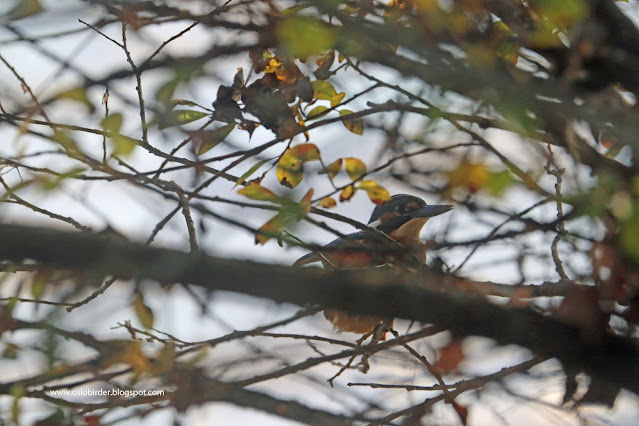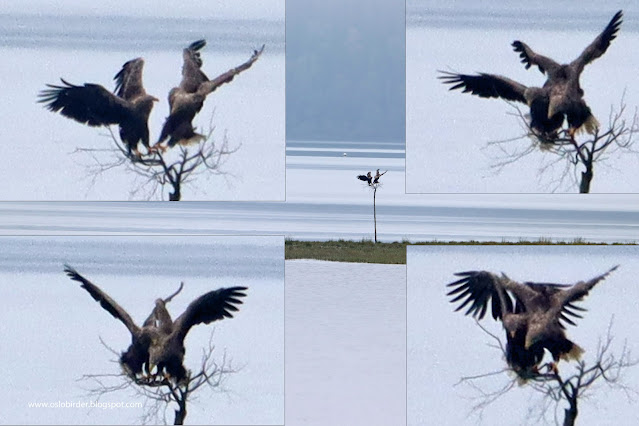Very high up on my list of birds to find is an adult
male Pallid Harrier. I have seen adult males both in Norway and abroad
and have twice found 2cy Pallids in Norway but the self-found adult male,
ideally in Maridalen, remains up there.
Yesterday, Jack and I went out to Nordre Øyeren hoping for
some good birding and raptors and harriers were definitely on the wish list. It
was a bit foggy but definitely birdy with lots of finches, especially
Bramblings and hundreds of Greylags and Mallards at our first stop along with a
few Pintail.
From the tower at Monsrudvika we were initially a bit
disappointed with no egrets, no raptors and few duck to see. After not too long
though I picked up a BOP perched in a dead bush at quite a long range. My
initial call was male Hen Harrier but the more we looked at (it was preening
facing us) the more we wondered how large it was and started thinking it may be
an exceptionally pale (its underside looked white) Sparrowhawk. Thankfully it
flew though and then its identity as a male harrier was clear and the long,
narrow wings with a wedge of black left no doubt it was a male Pallid! In the
scope the views were good enough, although the ability to count the number of
primaries making up the “hand” is impossible on these, and most field, views
and requires good photos. My photos are not good at all but I will suggest can
be filed in the record shot category and as such I can skip having to write
a description for the locals records committee.
My views (and photos) of self-found Pallid Harriers are
following the same trend as for Red Kite and the next one will be so distant as
to be unidentifiable which will hopefully mean that the cycle will start afresh
and I will have views to die for.
Were I to find one, a male Pallid Harrier won’t be a new
species for Maridalen as one was photographed there this spring although believed
to be a Hen at the time. These sort of records keep my motivation up as does
the pluckings of a ringer from his garden in the forest just outside of Oslo.
Today he plucked Red-flanked Bluetail and Yellow-browed Warbler from his nets
and on Friday a Firecrest so there must be lots of good birds just waiting to
be found out there.
On Friday I paid a trip to the islands and a notable
increase in numbers of Goldcrests and Chiffchaffs had me hoping for their rare
cousins but I had to consent myself with a couple of Shags.
 |
| male Pallid Harrier (steppehauk) |
 |
| here the black wedge can be clearly seen..... |
 |
| Shag (toppskarv) and Cormorant (storskarv) gracing Fru. Galteskjær with their presence |


























































